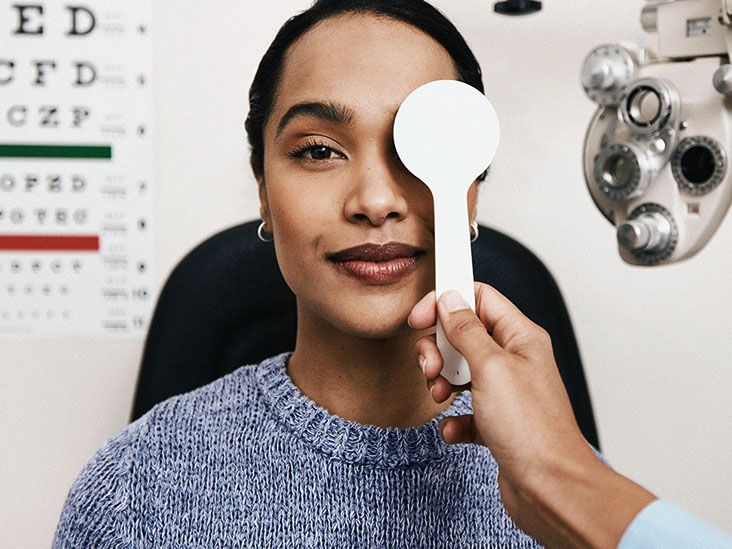Leading Eye Doctors in Andalusia: Schedule Your Appointment Today
Leading Eye Doctors in Andalusia: Schedule Your Appointment Today
Blog Article
Understanding the Different Vision Correction Procedures Available for Clearer View
In the world of vision adjustment procedures, a plethora of alternatives exist to deal with refractive errors and provide people with clearer sight. From the extensively acknowledged LASIK surgery to less intrusive procedures like PRK and implantable lenses, the area of ophthalmology provides a variety of techniques tailored to fit various needs and preferences. Each procedure features its very own set of considerations, advantages, and prospective threats. Recognizing the nuances of these vision adjustment techniques is crucial for making educated decisions regarding one's visual health and wellness. Allow's check out the details of these procedures and clarified the path to attaining improved vision clearness.
LASIK Surgery
LASIK surgical treatment is an usual refractive procedure used to remedy vision troubles such as astigmatism, nearsightedness, and farsightedness. This surgical technique, which means Laser-Assisted in Situ Keratomileusis, intends to improve the cornea to improve exactly how light is concentrated on the retina, inevitably boosting vision quality. During the procedure, a thin flap is created on the cornea, and a laser is used to remove accurate amounts of tissue to reshape it properly. This reshaping allows for light to be accurately focused onto the retina, fixing refractive errors.
One of the main benefits of LASIK surgical procedure is the fast improvement in vision experienced by people. In general, LASIK surgery is a preferred option for people looking for a long-term option for their vision problems.
PRK Treatment

PRK is an appropriate alternative for people with slim corneas or those at a higher risk of eye injuries, as it does not involve producing a corneal flap. The recovery process for PRK is somewhat longer compared to LASIK, as the epithelium needs time to regrow. Individuals might experience pain and fuzzy vision for a couple of days adhering to the treatment.
Despite the longer recovery time, PRK can yield outstanding cause vision enhancement, making it a useful choice for those who might not appropriate candidates for LASIK surgery. - Eye Doctors in Andalusia
Implantable Lenses
As opposed to PRK where the cornea is reshaped directly, implantable lenses offer another approach for dealing with vision by putting fabricated lenses inside the eye. This treatment is specifically valuable for people with high degrees of astigmatism, farsightedness, or nearsightedness that might not appropriate candidates for laser surgeries like LASIK or PRK.
Implantable lenses, also called phakic intraocular lenses, job by supplementing the eye's natural lens with a synthetic one. These lenses can be placed in front of the all-natural lens (former chamber) or behind the iris and in front of the natural lens (posterior chamber) By readjusting the power and positioning of these lenses, eye doctors can successfully remedy refractive mistakes and improve visual acuity.
One benefit of implantable lenses is that they are detachable and exchangeable, offering flexibility for future changes. As with any type of surgical treatment, there are risks entailed, such as infection or cataract formation. Individuals considering implantable lenses need to talk to an eye care expert to determine one of the most suitable choice based on their private demands and eye health and wellness.
Corneal Rings

The procedure for placing corneal rings is fairly fast and minimally intrusive, commonly executed as an outpatient treatment. Throughout the surgery, the ophthalmologist makes a small incision in the cornea and inserts the rings at a specific depth. Once in place, the rings aid to improve the cornea, giving a smoother surface area for light to get in the eye, which can cause more clear vision.
Corneal rings are thought about a relatively easy to fix procedure, as they can be eliminated or replaced if necessary. While they might not entirely remove the demand for glasses or get in touch with lenses, corneal rings can substantially enhance vision high quality and general visual convenience for people with keratoconus or other corneal irregularities.
Refractive Lens Exchange
Following the improvement of corneal abnormalities with treatments like corneal rings, one more vision correction technique that can resolve refractive errors is Refractive Lens Exchange (RLE) RLE is a surgery that entails changing the eye's natural lens with a synthetic intraocular lens (IOL) to correct refractive mistakes such as farsightedness, presbyopia, and nearsightedness. This procedure is particularly beneficial for people who may not be ideal prospects for treatments like LASIK or PRK as a result of elements such as thin corneas or high refractive errors.
RLE is similar to cataract surgical treatment, as both involve getting rid of the eye's natural lens; nonetheless, in RLE, the lens is clear, not gloomy as in cataracts. The fabricated lens implanted throughout RLE can be customized to attend to the person's particular refractive mistake, offering clear vision at numerous distances. Healing time for RLE is reasonably quick, and individuals can anticipate improved vision quickly after the treatment. Just like any kind of medical procedure, prospective threats and problems exist, so a comprehensive appointment with an eye care expert is crucial to determine if RLE is the ideal vision improvement option.
Conclusion

In the realm of vision correction treatments, a wide range of options additional hints exist to resolve refractive errors and provide people with clearer view.LASIK surgery is an usual refractive procedure made use of to remedy vision problems such as nearsightedness, farsightedness, and astigmatism.While likewise a common refractive procedure, the PRK (Photorefractive Keratectomy) strategy differs from LASIK surgical procedure in its method to dealing with vision problems.Adhering to the correction of corneal abnormalities with treatments like corneal rings, another vision improvement technique that can attend to refractive mistakes is Refractive Lens Exchange (RLE) LASIK surgery, PRK treatment, implantable lenses, corneal rings, and refractive lens exchange are all options that can deal with various vision concerns.
Report this page